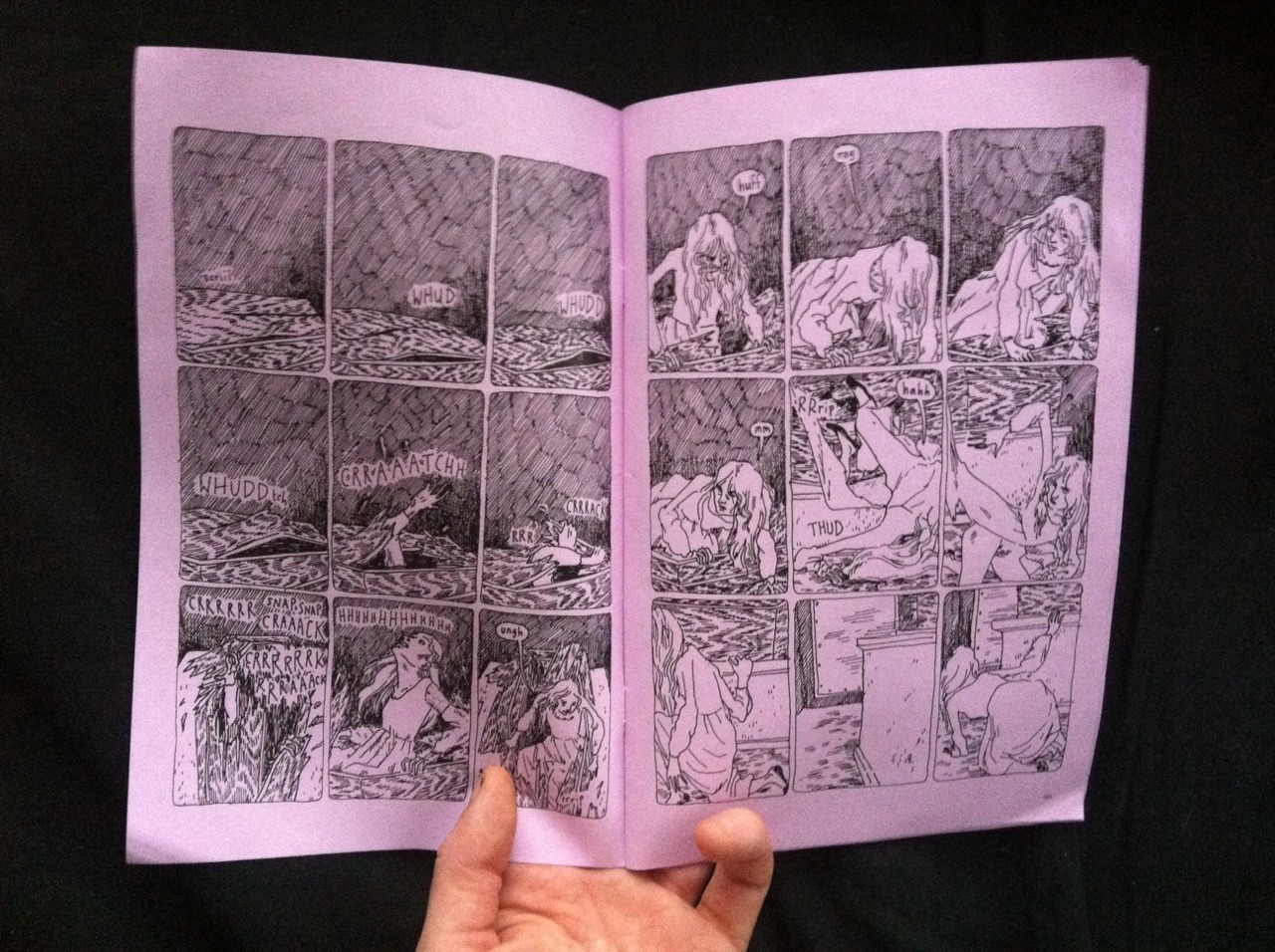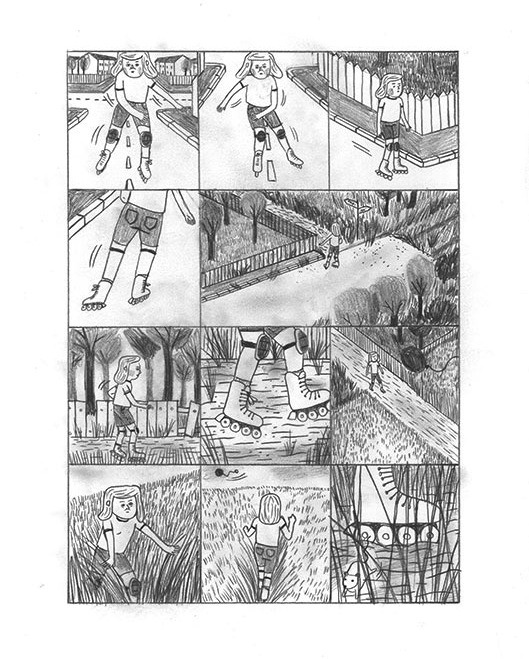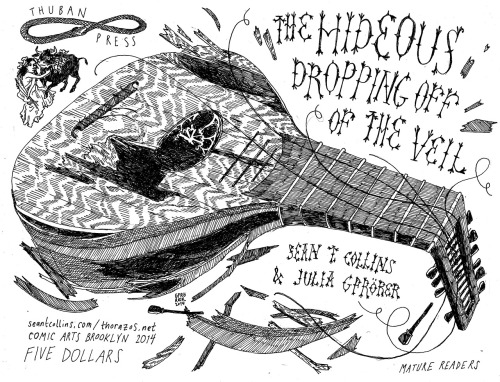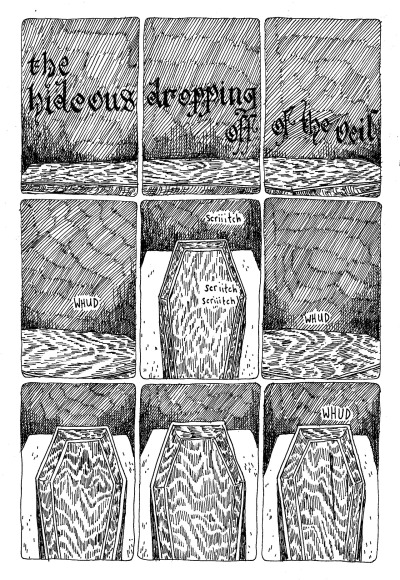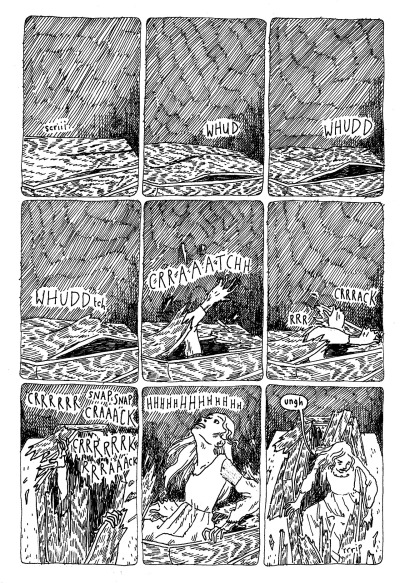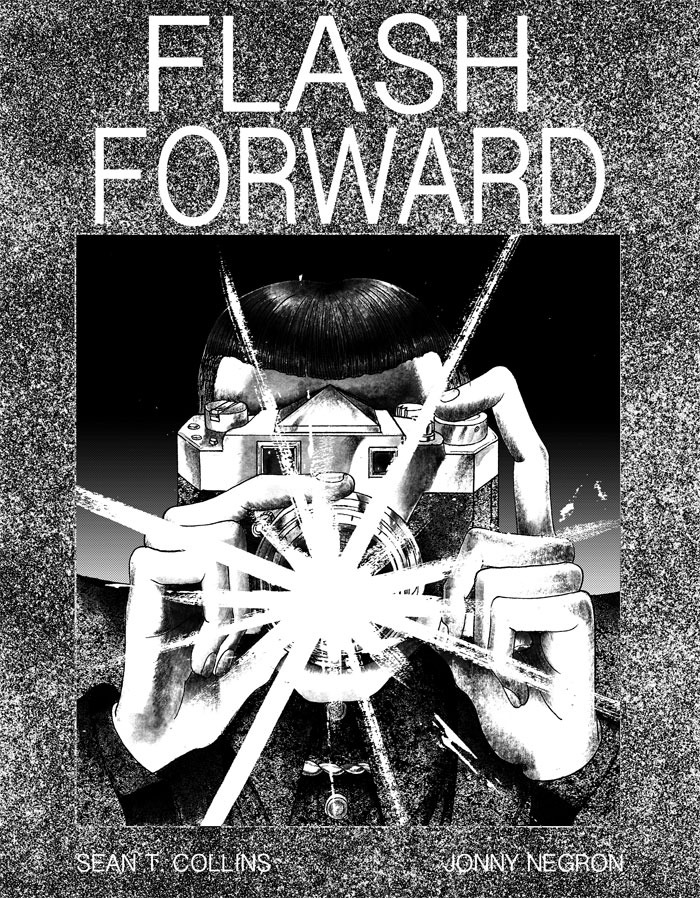I’ll be talking about the Newsroom finale, The Comeback, The Affair, and Homeland on @huffpostlive at 5:30pm—tune in: http://huff.lv/1DhCjt6
“The Wire” Wednesdays, Part One: “We’re Building Something Here” (Season One, Episodes 1-6)
The Wire returns to screens of all kinds in 16 days, but it never really went away. More than any other show from the New Golden Age of Television, it has remained a part of the conversation long after the last notes of its final musical montage played out, seven years ago this coming March. The Sopranos started it all, but the cultural currency of its genre — the mafia saga — ended with it. Deadwood was the Baltimore crime drama’s contemporary, and like The Wire it mapped the intersection of criminality and community, but its truncated run, designed to lead to a fourth season that never saw the light of day, leaves it as much of a question mark as an exclamation point. Sex and the City eventually got the props it deserves as a forerunner for idiosyncratic cable programming, but its status as a sitcom, its fixation on status symbols, and, sadly, the gender of the characters doing the fixating preserve its marginalization. But this Baltimore cops-and-crooks drama — with its go-for-broke serialized storytelling, its prescient placement of American political problems at its structural center, its cross-cultural cast, and its endlessly quotable writing — has only increased in both praise and prominence since its initial six-year, five-season run, during which it was already being hailed as the greatest television show ever to air. HBO may have remastered it for its HD rerelease on December 26, but that’s simply technology catching up to the minds of the viewing public, where it’s been high definition and state of the art all along.
I’m very proud to present The Wire Wednesdays, a new weekly column for the New York Observer in which I’ll be rewatching and reviewing the show. The plan is to cover half a season at a time, so this installment covers Season One, Episodes 1-6. I have complicated opinions about this complicated show and it’s a great pleasure to be able to write about it at length.
“The Comeback” thoughts, Season Two, Episode Five: “Valerie Is Taken Seriously”
Sitcoms are boring to look at. You ever think about that? How one of only two fictional-entertainment teams on TV throws the visual game before it even reaches the playing field? You get sitcoms that are cleverly edited, sure, where the comic timing depends on the cuts; Arrested Development takes top honors here.. You get sitcoms that do convincing pastiches of other genres of TV (Community), or of the documentary/reality format (too many to list, but you’re reading about one right now). And if you look down memory lane you can find shows that had a visual tone that made them memorable and unmistakable, like the Gordon Willis golds and browns of the bar set in Cheers. But in much the same way that mainstream movie comedy appears content to leave “I dunno gang, maybe we should make the thing look good too” in the hands of the Coen Brothers, the situation comedy has pretty much tossed the visual-innovation baton to Adult Swim and called it a race.
Bless its black heart: The Comeback tries harder. “Valerie Is Taken Seriously,” last night’s killer episode (a welcome return to form after last week’s suicidal one), has the mockumentary thing down cold. It also nails not one but two genre spoofs: the grim’n’gritty, dimly lit world of HBO dramas, and the day-glo gibberish of children’s television. (As the father of a three year old, I assure you that far greater horrors than Nicky Nicky Nack Nack lurk in the kids’ section of channel guide.) It could easily have coasted. Instead, it staged its two lynchpin scenes — Valerie’s transformation into a literal monster via green screen, and her eye-opening conversation about her performance with the New York Times reporter — to look as memorable as they felt.
I reviewed this week’s excellent episode of The Comeback for the New York Observer/comedies are boring-looking most of the time for some reason.
NEWSROOMAGEDDON
I’ll be talking about last night’s execrable episode of The Newsroom (as well as Homeland, which was also very bad, and The Comeback, which was very good) on HuffPost Live’s Spoiler Alert at 4:30pm. Tune in here!
“The Comeback” thoughts, Season Two, Episode Four: “Valerie Saves the Show”
It’s an irony literally no character on the show possesses the self-awareness required to appreciate, but here it is: It took an act of literal self-destruction for a show about the slow-motion, largely self-inflicted crushing of a human spirit to hit a serious wall.
Not that death should be off limits for The Comeback, or for any other cringe comedy. Untimely demises have been a part of the genre going back to Spinal Tap’s countless dead drummers. (“The official explanation was he choked on vomit….Well, they can’t really prove whose vomit it was.” “You can’t really dust for vomit.”) The Comeback’s own HBO antecedent, Curb Your Enthusiasm, went to the mortality well most memorably when Larry David’s dad told him he hadn’t been informed of his own mother’s funeral because “she told me not to bother you.” Both of the examples illustrate the central conceit of their respective stories: Spinal Tap chronicles a world of moronic debauchery, while Curb obsesses over the millions of minute rules that govern human interaction. So if a drummer is murdered by puke in the former, or a son misses his mom’s funeral because his dad didn’t want to impose in the latter, the pieces fit.
But the suicide that serves as a climax for “Valerie Saves the Show” is a hearse of a different color.
I reviewed this week’s episode of The Comeback for the New York Observer.
On the Star Wars trailer, because someone asked
I find the idea of Star Wars without George Lucas singularly unappealing, even troubling. Turning Star Wars into a depersonalized, committee-driven content factory divorced from its creator in perpetuity, like the major superhero franchises, is a tremendous regression in any number of ways. Whatever his faults, Lucas is a real filmmaker, and these were his original ideas. J.J. Abrams, by contrast, is a facilitator, a babysitter for the ideas of others —Mission: Impossible, Star Trek, Star Wars, the Spielberg gestalt (Super 8). His involvement with Lost was minimal — the germinative idea was brought to him by the network, and other than his admittedly fine work co-writing and directing the excellent pilot, 95% of that show, good bad and ugly, was Damon Lindelof and Carlton Cuse. Alias is a sexy female spy series. Honestly, his greatest claim to originality is Felicity. In other words, he is Hollywood’s first “auteur” in the mold of the countless superhero-comics writers and artists who’ve been content to labor with the tools made for them by actual visionaries decades ago, spending entire careers creating nothing new, ideal employees for a system that has wholly conflated art and product. Moreover, his visual style is capable of being parodied in its entirety with a five-second montage of a shaky-cam shot and lens flare. That he’s apparently pouring Star Wars into his bog-standard garden-variety postmillennial action-blockbuster directorial mold (shaky-cam stormtroopers) instead of adjusting for the material is crass and sad. I’m sure the movies will have entertaining moments performed by state-of-the-art special effects technicians and likeable, talented actors, and have all the soul, guts, and idiosyncracy of a superhero movie, which is to say none at all.
Also the lightsaber makes no sense. “Check out my sword. It’s extra good because it has two little swords sticking out from the hilt of the big sword, in case I need to stab someone standing immediately to my right. Or to my left, even — the possibilities are endless, really.”
The HuffRoom
I’ll be talking The Newsroom, The Comeback, The Walking Dead, and the best shows for a holiday-break binge on HuffPost Live’s Spoiler Alert today at 5:05pm. Tune in here!
The Boiled Leather Audio Hour Episode 35!
Four Against the World: A “World of Ice and Fire” Roundtable feat. Steven Attewell and Amin Javadi
Celebrate Cyber Monday the old-fashioned way: in boiled leather! The Boiled Leather Audio Hour is back for our second episode in one week, and once again it’s our biggest to date. Since no one episode, and no two hosts, could contain The World of Ice and Fire, Stefan and I have tapped Race for the Iron Throne’s Steven Attewell and A Podcast of Ice and Fire’s Amin Javadi to join in the discussion of George R.R. Martin, Elio M. García Jr., and Linda Antonsson’s seemingly inexhaustible world book. We tackle many of the topics we missed in our first episode on the book, and double back on a few besides.
One more note and then it’s on with the show: Thank you so much for your generous donations to BLAH’s emergency tech-crisis fund. Your support has done a great deal to help defray the cost of the new computer and software I needed to continue recording the podcast. If you haven’t already, and you’re still in a spending mood after all those hot online deals, and if you enjoy the show or the blogs enough to warrant it, you can donate via paypal here. Any amount is extraordinarily appreciated.
Alright, that concludes our message from the Iron Bank. Check the links below for a host of posts and podcasts this fearsome foursome has already done on the book, then listen and enjoy!
Sean & Stefan’s previous BLAH episode on TWoIaF
Amin interviews Elio & Linda about the making of TWoIaF for A Podcast of Ice and Fire
The whole Podcast of Ice and Fire gang discusses TWoIaF
Steven’s chapter-by-chapter analysis of TWoIaF
Sean’s Rolling Stone article: The 10 Craziest Things We Learned from The World of Ice and Fire
“Gotham” thoughts, Season One, Episode Ten: “LoveCraft”
Any superhero story requires a certain suspension of disbelief. We’re not even talking about the secret origins and incredible powers here, mind you — a culture that can accept Matthew McConaughey as an astronaut can handle a few radioactive spiders, green power rings, and super-soldier serums with no problem. The real storytelling stretch that superhero stories ask their audiences to accept is one of basic human behavior. After all, no billionaire has ever spent their ducats to become a masked, armored vigilante, fighting crime in a gaudy costume under a nickname ending in “-man.” A good caped-crusader story — even one like Gotham, which several crusaders but no actual capes — convinces you that “well, yeah, no one acts like that…but what if they did?” is a question worth asking.
By that standard, Fox’s year-one prequel to the Batman story not a good superhero story. Oh, it’s a fun romp, from time to time anyway. As it approaches the mid-season mark under showrunner Bruno Heller, it’s created a more visually entertaining Gotham City than Christopher Nolan’s dour concrete canyon, a place where buildings, bridges, burlesque clubs, even bathrooms are just a bit bigger than our workaday world’s. The score, by Graeme Revell and David E. Russo, is similarly souped up, swelling and humming and clanging and making everything feel, well, like a comic book. (That’s a compliment where I come from.) The setting looks and sounds like a world where a man who dresses up like a bat and punches evil clowns would fit right in.
But tonight’s episode, “LoveCraft,” reveals a fundamental problem with Gotham’s tone: Evil clowns, sure, bring ’em on. Larger-than-life heroes who battle injustice in spectacular style? Not so much. With a lack of actual bona fide Batman built right into the premise, the show pitch-shifts real life up a few octaves, sure, but almost always in an unpleasant direction. What should feel camply thrilling, and often does in the moment, winds up leaving you feeling as dirty as Harvey Bullock looks.
The Boiled Leather Audio Hour Episode 34!
Around the World: Discussing “The World of Ice and Fire”
We’re back, and a world awaits! Released with deserved fanfare a few weeks ago, The World of Ice and Fire, the long-awaited world book by George R.R. Martin and his co-authors Elio M. García Jr. and Linda Antonsson of Westeros.org, has proven to be an extraordinarily fecund source of information, speculation, and general wonderment. That’s a pretty fair characterization of this episode of The Boiled Leather Audio Hour, as a matter of fact: No muss, no fuss, just me and Stefan the best and most baffling moments of this extensive fake history in our biggest episode yet.
But before you begin, a quick housekeeping note: Stefan and I haven’t been able to record a podcast since July, as a series of professional, personal, and (most insurmountably) technical issues scuttled half a dozen different scheduled recording times. The resolution of these issues necessitated the purchase of a whole new computer and set of software, which I was happy to do, but which obviously took a hefty chunk out of the old Boiled Leather budget.
So if you enjoy The Boiled Leather Audio Hour, boiledleather.com, The Nerdstream Era, or any of our assorted projects, please consider clicking here to donate a few dollars to help offset the cost of the show via PayPal. (There’s also a Donate button at the top of boiledleather.com.) You all have been so tremendously complimentary and supportive, and we’re extraordinarily grateful that you listen!
Sean’s Rolling Stone article: The 10 Craziest Things We Learned from The World of Ice and Fire
Stefan’s “ruminations” on TWoIaF for Tower of the Hand
HuffPost Livin’
I’ll be talking The Comeback, The Newsroom, The Affair, and Homeland on @HuffPostLive today at 5pm. Tune in here!
“The Comeback” thoughts, Season Two, Episode Three: “Valerie Is Brought to Her Knees”
My skin is crawling and I’ve never felt more alive.
This, verbatim, was my reaction the first time I watched The Comeback just two short weeks ago. Actually, it followed an all-caps rant on my twitter feed to the effect of OH MY GOD WHY DID NONE OF YOU TELL ME TO WATCH THE COMEBACK BEFORE. A mockumentary in which the protagonist occasionally realizes the joke is on her and visibly chokes back tears? Where have you been all my life?
As the kind of person who could only like This Is Spinal Tap more if the “Stonehenge” sequence had been followed by an unbroken two-minute shot of David St. Hubbins having a backstage breakdown upon realizing his entire life was a miserable failure, this was manna from heaven for me. Its trick is that by forcing you to experience the humiliations of Valerie Cherish asgenuinely humiliating, with all the barely tamped-down misery that entails, instead of just as joke fodder, the show is actually more empathetic to her suffering, and harsher on the sexist system of celebrity that inflicts it.
So you can keep your Liz Lemons and your Leslie Knopes and their adorkably heartwarming/heartwarmingly adorkable tumblr gifsets—I wear all black all the time, for god’s sake. Give me Valerie Cherish auditioning for a role designed to tear her to shreds because it’s the only role she can get. I want comedy that hurts. If it comes in a pastel track suit, so fucking be it. And from what I’ve managed to see so far (the three extant episodes of Season Two and about half of Season One, which I’m HBOGoing as fast as my internet service provider can handle it), few episodes of The Comeback have been quite this painful.
Hooray, I’m reviewing The Comeback for the New York Observer now! Thanks to Drew Grant for giving me this chance to SHINE!
The HuffPost Comeback
I’ll be talking The Newsroom, The Comeback, The Affair, and Homeland on @HuffPostLive at 4:50pm. Tune in here!
The Hideous Dropping Off of the Veil is now available for purchase
“Is there anything more tragic than such a scene of failed self-erasure, when we are reduced to the obscene slime which, against our will, persists in the picture?” (Slavoj Zizek, The Thing from Inner Space)
“Jesus Christ.” (Tom Spurgeon)
A meditation on fucking as the final integrative attempt of a flagging psyche, on the refusal of the sensual half of the self to be repressed. It also includes incest, voyeurism and attempted murder. This comic was scripted by Sean T. Collins, and drawn by Julia Gfrörer, based on “The Fall of the House of Usher” by Edgar Allan Poe. It contains pornographic imagery and is intended for mature audiences. Xerox printed on lavender text weight paper, saddle stitched, 24 pages, $5.
https://www.etsy.com/listing/210813489/the-hideous-dropping-off-of-the-veil
Buy yourself a copy of the new comic Julia and I made! It’s filth, just as Edgar Allan Poe intended.
Comics Time: Earthling
Aisha Franz’s faces are an architectural marvel. Their features bunch up in the center of great round white circle heads crowned with hair that looks sculpted from clay. They’re bookended by apple cheeks drawn with a perpetual blush rendered as circular gray scribbles, as though a physical ordeal or an uncomfortable emotion were always only scant seconds in their past. Eyebrows, wrinkles, creases, and smile lines push the eye toward the beady eyes and pug noses they ring. (The look is very Cabbage Patch Kids, but there’s a reason those weird-looking things made millions.) They broadcast emotion from the center of the head like a spotlight focused down into a laser — curiosity and confusion, peevishness and puckishness, boredom and loneliness and anger and, very occasionally, satisfaction and delight. In a book where Franz’s all-pencil style — the lack of inks and the deliberately boxy and rudimentary props and backgrounds suggesting a casual, tossed-off approach completely belied by Franz’s obvious control of this aesthetic — works very well, those faces work best of all.
The story is another matter.Earthlingtells the not-quite-multigenerational tale of a suburban mother and her two daughters — one on the cusp of puberty, the other of college. The book derives its title from the storyline of the younger daughter, who encounters and attempts to befriend an alien visitor she hides in the toy chest in her room. But it’s equally concerned with her older sister, who’s negotiating the needs of an estranged best friend, a physically eager but emotionally aloof suitor, and an absent father whose scheduled return is impending; and with their mother, who alternately seeks to discipline and connect with them while pondering a turning point in her own past. None are happy; all deal with their unhappiness alone. That’s the only choice allowed them in the book’s closed emotional system. Franz casts every supporting character as mean, manipulative, or oblivious. She paints her protagonists with a similar palette, or at least portrays them as so fixated on their own difficulties that they are useless to one another. Thus the storytelling deck is stacked against each to such a degree that we are forced to come to the same conclusions they do: no one understands them, the situation is hopeless, and only rash renunciations of responsibility or intercession by a well-timed savior can liberate them. Perhaps inadvertently,Earthlingteases out the undercurrent of narcissism that those of us who suffer from depression often suspect, and fear, helps fuel those gray-pencil periods in our lives, but only to reinforce it.
Comics Time: The Basil Plant
As an object, The Basil Plant is not much to look at. The same can’t be said of author Laura Lannes’s cartooning — as economical and as energetic as a well-delivered joke, with a thick, versatile line, and figurework that alternately recalls Anders Nilsen and Gabrielle Bell as played for laughs. The package containing that cartooning, however, is a bog-standard staple-bound minicomic, about 4.5″ x 3.5″, black and white, xeroxed, one page = one panel, its sole two-page spread not even located in the center of its 28 pages. You’ve seen a million of these things if you’ve been to a single small-press show. If you pick it up with the intention of reading it, you’re probably disinclined to be impressed. This is because you’re a sucker, which is what Lannes is counting on. The Basil Plant relies on your belief that you know what you’re in for. You think you know, but you have no idea.
I reviewed The Basil Plant by Laura Lannes for The Comics Journal.
STC @ CAB; The Hideous Dropping Off of the Veil
Come see the total fucking dreamboat pictured above, yours truly, at Comic Arts Brooklyn tomorrow! This year’s CAB will see the debut of The Hideous Dropping Off of the Veil, a new pornographic comic inspired by Edgar Allan Poe’s “The Fall of the House of Usher,” written by me and drawn by Julia Gfrörer. It’s a follow-up to our previous Poe porn collaboration, In Pace Recquiescat (based on “The Cask of Amontillado”), which will also be there, along with everything else Julia’s done lately. I’ll have copies of Flash Forward by me & Jonny Negron, too.
The show runs from 11am-7pm at Our Lady of Mt. Carmel Church, 275 N 8th St., in Brooklyn. Come find me at table U28, where I’ll be spending a bunch of time alongside Julia and Michael DeForge; I’ll be easy to spot as the third-sexiest person at the table. Hope to see you there!
The 10 Craziest Things We Learned from “The World of Ice and Fire”
2. Tywin Lannister was an even bigger bastard than we thought.
Before he became the not-so-proud patriarch of the dysfunctional Lannister clan, the future Lord Tywin was a fed-up heir trying to clean up his weak father’s messes. As you might expect from the future architect of the Red Wedding, this mostly involved killing a lot of people. The most famous incident involved Tywin’s slaughter of every last man, woman, and child from House Reyne, who’d risen in rebellion against their Lannister overlords. In both the books and the show, Tywin’s revenge was immortalized in the song “The Rains of Castamere”; the HBO series has featured versions by both the National and Sigur Ros, and when the band at the Red Wedding started playing it, that was the tip-off that the shit was about to hit the fan.
But we’d never learned the specifics of the massacre until now, and they’re somehow even more cold-blooded than the song made it sound. Castamere, the Reynes’ castle, was a mostly subterranean stronghold, extending deep underground into the old gold and silver mines through which the house had made its fortune. When Tywin attacked, the Reynes and their followers retreated underground, thinking the complex below was impervious to assault. It was — but it wasn’t waterproof. Tywin had his men redirect a river into the few remaining cracks and crevices. Tywin’s rain washed the Reynes right out of existence.
| The 10 Craziest Things We Learned From ‘The World of Ice & Fire’ | Rolling Stone
I wrote up a list of weird, wild, wonderful stuff from The World of Ice and Fire for Rolling Stone. In other words, the publication that gave us Hunter S. Thompson paid me to write about Sothoryos. This is bat country! |

